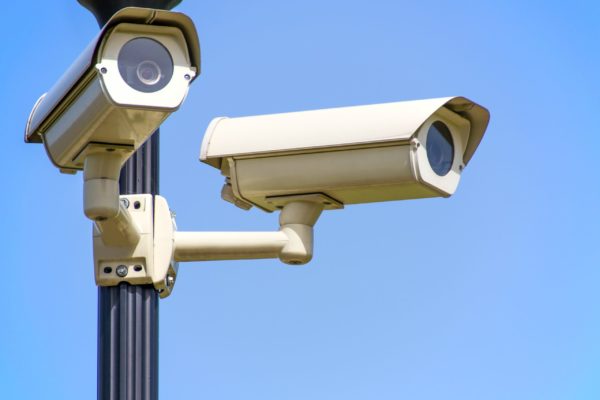
By Jay Jason Bartlett
Physical security systems play a critical role in protecting people, property, and assets from unauthorized access, theft, vandalism, and other forms of harm. These systems range from alarm systems and perimeter fence to surveillance cameras and access control devices and they need to be inspected frequently to make sure they are operating properly and offering sufficient security.
Testing the physical security systems that we have spent significant expense into installing into our environments involves evaluating their performance and detecting any vulnerabilities that could be exploited by hackers. This process typically involves several steps, including planning, preparation, execution, and analysis.
Planning the Test:
It’s important to create a testing plan that describes the scope and objectives of the test before testing a physical security system. The plan should specify the precise system components that will be evaluated, the testing procedures to be followed, the persons in charge of carrying out the test, and the anticipated results.
The physical security system’s operating environment should be considered in the strategy as well. When preparing for the test, take into account variables like the weather, lighting, and noise levels that may have an impact on the system’s performance.
After the testing strategy has been established, the physical security system needs to be ready for testing. This entails performing a careful examination of each component to make sure that it is operating properly, including cameras, sensors, alarms, and access control devices.
Before the test starts, any problems that were found during the inspection should be fixed.
This can entail changing out damaged parts, updating the software or firmware, or modifying the configuration of the system.
Execution:
After the system has been prepared for testing, the testing procedure itself can start. The test may encompass a range of scenarios, such as attempting to breach perimeter fencing, get around access control mechanisms, or get past surveillance cameras, depending on the nature of the system and the testing strategy.
The individuals in charge of carrying out the test should record any flaws or vulnerabilities found, as well as any system strengths or accomplishments, during the test. It’s crucial to keep a thorough record of the test, including the procedures followed, the tools employed, and the outcomes.
Analysis:
To find any flaws or vulnerabilities in the physical security system, the test’s results must be examined after completion. Examining video recordings, access logs, and speaking with individuals involved in the testing procedure may all be part of this research.
In order to guarantee that a physical security infrastructure is operationally capable, the actual auditing process of physical security systems is also a crucial component. Physical security audits can aid in locating any lapses in security as well as weaknesses and vulnerabilities. An efficient physical security audit can reveal how security measures are being put into practice, point out areas for development, and aid in the prevention of security breaches.
The following actions should be taken while performing a physical security audit:
Determine the Audit’s Scope:
The first stage in performing a physical security audit is determining the audit’s scope.
This entails selecting the places, buildings, resources, and assets that will be audited.
The scale of the organization, the nature of the operations, and any potential risks or threats will all affect the audit’s scope.
Information gathering:
The next step is to acquire details about the physical security measures in place after the audit’s scope has been determined. Performing physical inspections, interviewing security personnel, and evaluating security rules, procedures, and guidelines can all help with this.
Review the Physical Environment:
Reviewing the physical environment is the next phase. This entails locating probable points of entry and escape, evaluating the architecture and layout of the buildings, and locating potential weak points such blind spots, unattended spaces, and unguarded access points.
Access restrictions should be evaluated because they are a crucial component of physical security measures. To make sure that only authorized workers have access to restricted areas, assets, and resources, it is crucial to evaluate access controls. Physical barriers, key cards, biometric scanners, and security staff are a few examples of access controls.
Assessing security people is important since they are a key component of physical security measures. It is crucial to assess security employees to make sure they are appropriately qualified, possess the required knowledge and expertise, and adhere to security policies and practices.
Analyze Security Technologies:
Physical security measures are not complete without the use of security technologies like cameras, alarms, and other monitoring equipment. It is crucial to assess these technologies to
make sure they are operating effectively, are positioned appropriately, and are offering the required coverage.
Undertake a Risk Assessment:
To identify potential hazards and threats to the organization’s physical security, it is crucial to conduct a risk assessment. This can be accomplished by looking at previous data, evaluating the security mechanisms in place today, and spotting any potential weaknesses.
After the physical security audit is finished, a report that summarizes the results and offers suggestions for improvement should be written. The right stakeholders should be informed of the findings, and a plan should be created to put the suggestions into action.
Recommendations for enhancing the physical security system may be made in light of the analysis’s findings. This can entail enhancing processes, updating tools, or giving staff members in charge of system management and monitoring more training.
Therefore, testing physical security systems is a critical component of maintaining the safety and security of people, property, and assets. It’s essential to develop a thorough testing plan, conduct a comprehensive inspection of all components, and execute the test using a variety of scenarios that simulate real-world threats.
Physical security systems can be strengthened and made more effective to offer the maximum level of protection by examining the test results and providing the necessary recommendations for improvement and it is imperative upon us all to make sure all of our security systems are routinely tested and ensured they are working as we expect.

Jay Jason Bartlett is the Managing Editor of Security.World and the CEO of Cozaint Corporation, a manufacturer of security surveillance solutions. Jay has over 40 years in the high-tech industry and over 15 years in physical security. visit: cozaint.com
See more articles on Cozaint Corporation
Source: cozaint.com
